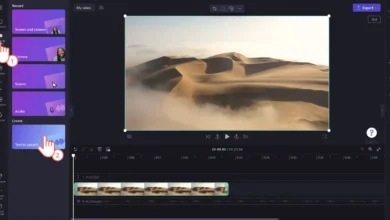AI in Video Conferencing: How Smart Filters Are Improving Calls

AI is transforming video conferencing through the integration of smart filters designed to enhance the user experience. These filters not only improve video quality but also adjust backgrounds and lighting in real-time. Consequently, they contribute to clearer communication and a more polished appearance during virtual meetings. As this technology evolves, it raises questions about its potential impact on digital collaboration and the future of remote interactions. What innovations might lie ahead?
The Role of AI in Enhancing Video Quality
The integration of artificial intelligence in video conferencing has significantly transformed the way visual content is delivered and perceived.
AI-driven video enhancement techniques, including pixel optimization, enable clearer, more vibrant imagery, enriching user experiences.
These advancements not only improve the overall quality of video calls but also empower individuals to communicate more effectively, fostering a sense of freedom in virtual interactions.
Noise Reduction Techniques for Clearer Communication
While engaging in video conferencing, background noise often detracts from the clarity of communication, making it challenging for participants to focus on the discussion.
Advanced noise reduction techniques utilize AI to filter out ambient sound, enhancing audio quality.
This technology allows for a more immersive experience, ensuring that key points are conveyed without distractions, thereby fostering a more productive and engaging dialogue.
Real-Time Lighting Adjustments for Professional Appearance
As participants navigate virtual meetings, the impact of lighting on their professional appearance becomes increasingly significant.
Real-time lighting adjustments enhance visibility, allowing individuals to present themselves confidently.
By utilizing features like virtual makeup and background enhancement, users can achieve a polished look that reflects professionalism.
These adjustments not only improve aesthetics but also foster a more engaging and productive virtual environment.
The Future of Smart Filters in Virtual Meetings
How might the evolution of smart filters transform virtual meetings in the coming years? Enhanced virtual backgrounds and advanced user personalization will redefine participation, allowing individuals to curate their environments seamlessly.
As AI continues to develop, these filters may adapt in real-time, reflecting personal preferences and fostering a more engaging atmosphere. This evolution promises to elevate communication and collaboration in diverse professional settings.
Also read: AI in Stock Photography: The Future of Royalty-Free Images
Conclusion
As the digital landscape evolves, AI-powered smart filters emerge as the unseen architects of virtual communication, sculpting a more polished and engaging experience. By seamlessly enhancing video quality, reducing noise, and optimizing lighting, these innovations not only elevate professionalism but also cultivate a sense of connection among participants. Looking ahead, the integration of such technologies promises to redefine the contours of digital collaboration, transforming mundane meetings into vibrant exchanges where ideas flourish like flowers in spring.




